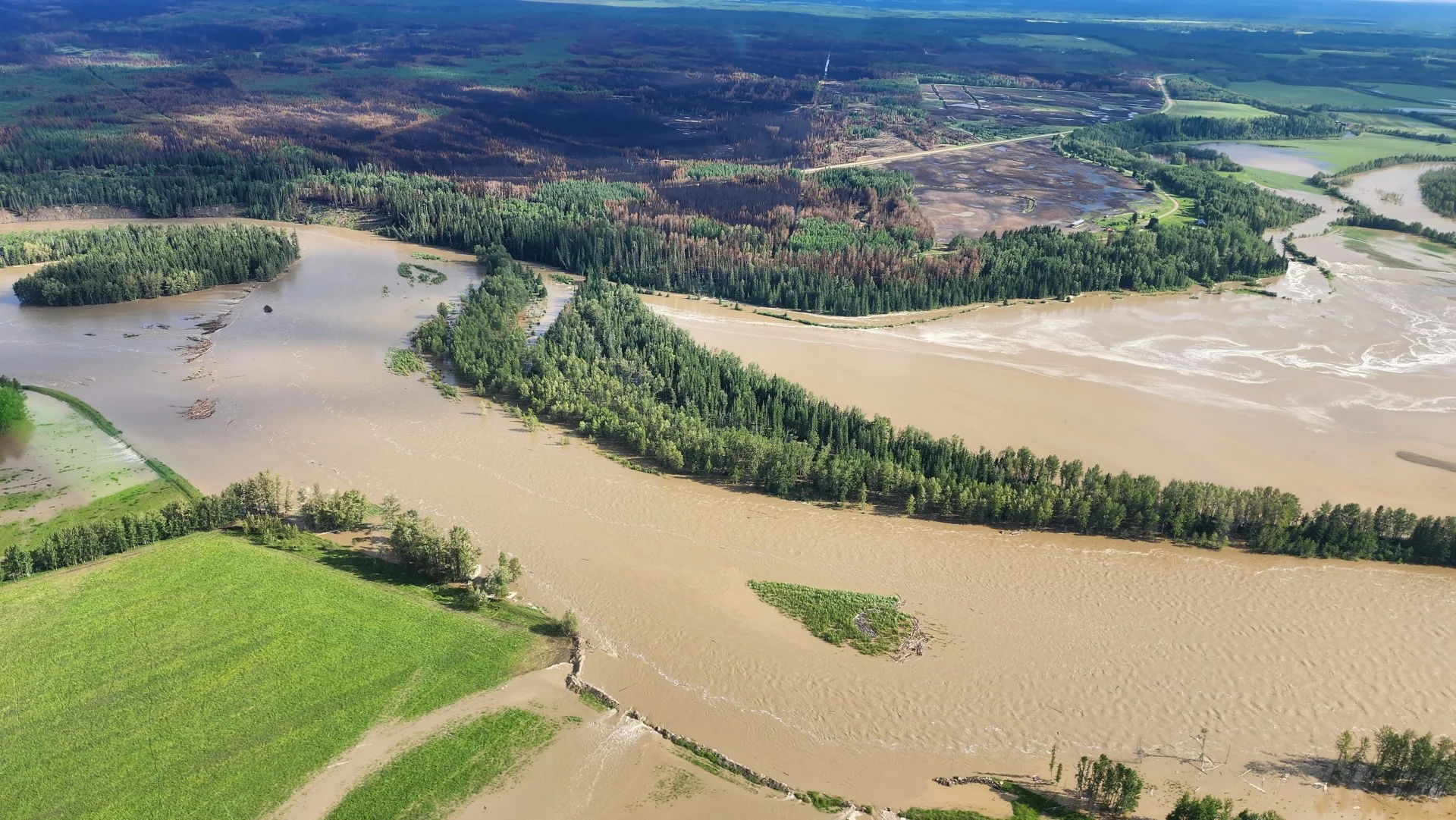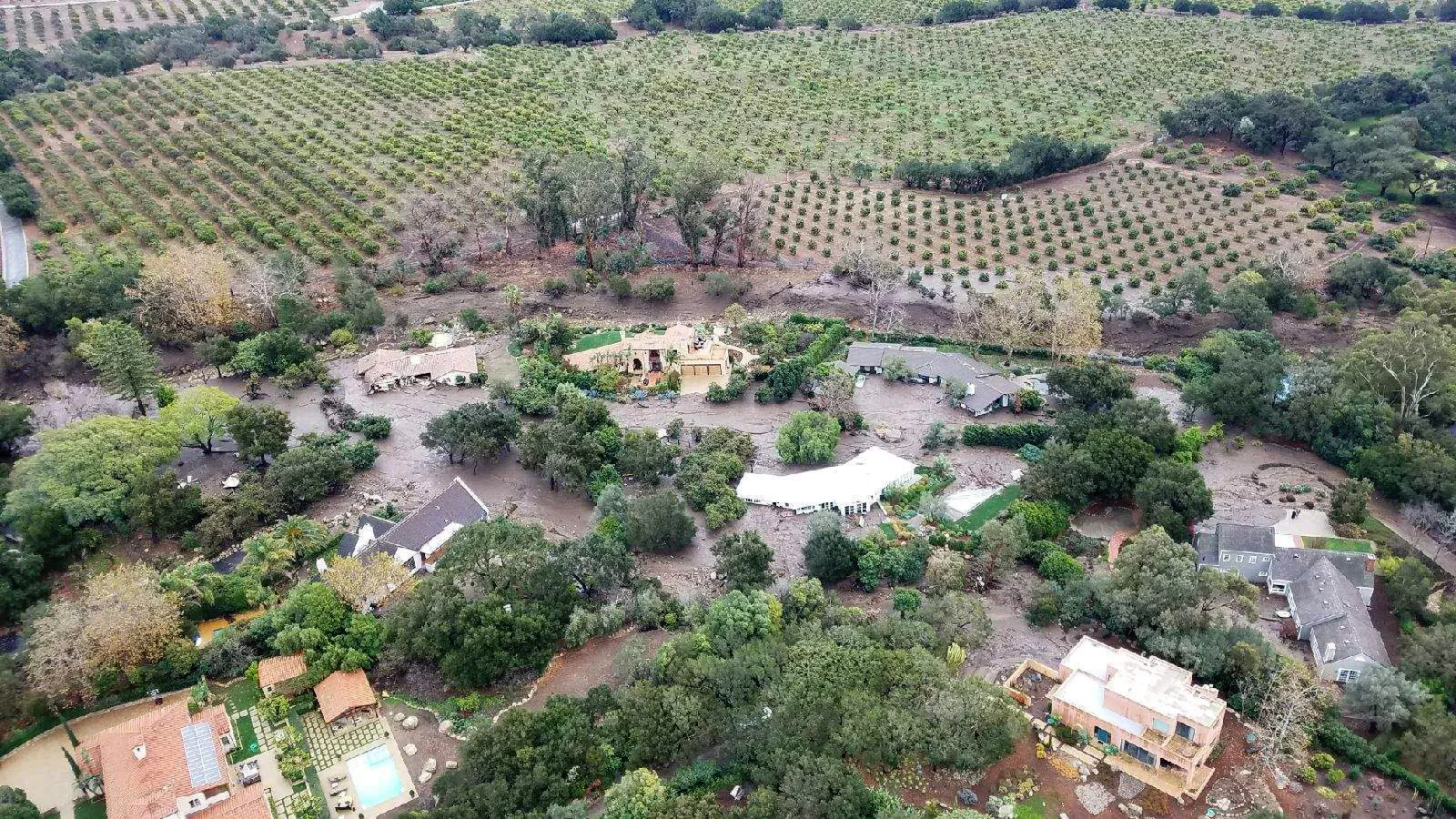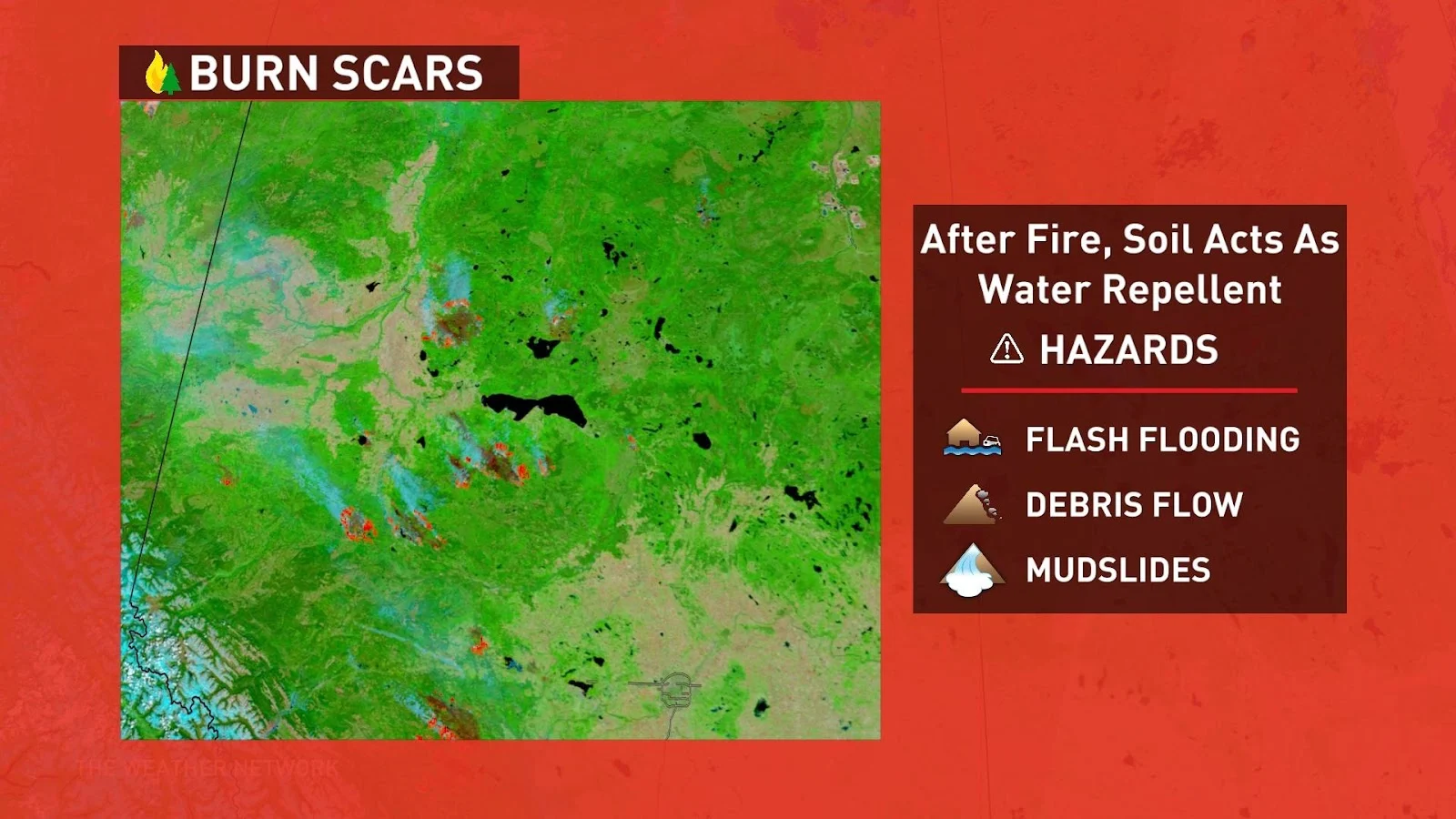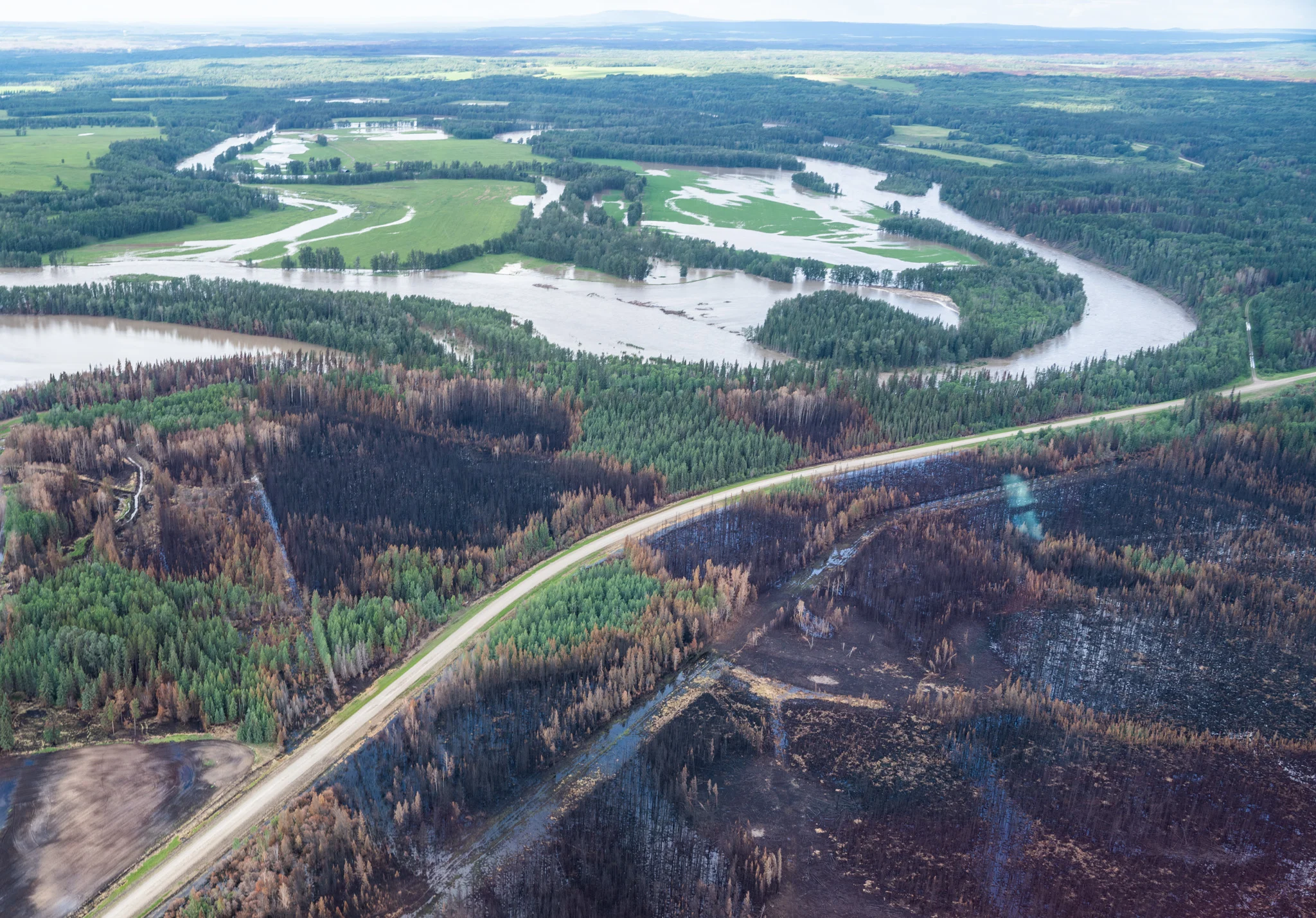
Why we see floods following fires: A tale of two extremes
Some say opposites attract, and in the case of wildfires and floods, that is kind of true
Visit The Weather Network's wildfire hub to keep up with the latest on the active start to wildfire season across Canada.
With wildfire season well underway, some may be shocked to see the same areas impacted by fires become victims to flash flooding, or even landslides depending on the topography of the area, in the following days to months or even years.
We’ve seen tragic and disastrous examples of this in the past, such as with the 2018 Montecito mudslides in southern California. The deadly mudslides came following a highly destructive wildfire season in 2017 and struck the mountainside town in the early morning hours after a heavy rainfall soaked the landscape.

Homes and streets of a neighborhood affected by the Santa Barbara County mudslides in Santa Barbara, California are shown, Jan. 9, 2018, from the perspective of a Coast Guard MH-65 Dolphin helicopter crew involved in rescuing injured and stranded victims. Coast Guard helicopters were dispatched from Los Angeles-Long Beach and San Diego to assist local first responders with rescue efforts. (U.S. Coast Guard photo/Wikipedia)
Or more recently in Australia, who experienced an unprecedented bushfire season in 2019/2020 that blazed intensely and caused massive environmental damage. Two years later, the same areas affected by the fires became significantly flooded after receiving an unprecedented amount of rain.
ALSO CHECK OUT: Atmospheric rivers becoming so intense we need to rank them like hurricanes
While this may seem like a cruel coincidence, it’s really not. It’s science, it’s nature.
Altering the landscape
Wildfires can alter landscapes in a few ways; they remove vegetation that would otherwise provide stabilization and absorption to the ground, and they can alter the soil composition itself.
If a fire burns hot enough, or is persistent enough, it can change some compounds in the soil to make the soil hydrophobic. Meaning any heavy rainfall that occurs in the affected area will simply pool on the ground surface, as the soil will repel the water.

What comes next
While this is a great risk on its own, combine it with a lack of trees and vegetation to slow the flow of water and you have a destructive flash flood.
Even more dangerous is when this happens on a slope, such as what happened in California in 2018. Gravity is going to pull all that water down, and with it, any debris it picks up along the way. This results in deadly, fast-moving mudslides (a type of debris-laden landslide).
This is definitely much more of a threat in fire-prone areas of Canada such as British Columbia or southwestern Alberta. But flash floods are still dangerous no matter where they are in the country.
Without vegetation or soil to absorb the water around river beds and basins, increases in water volume from heavy rain events will have nowhere to go except up and out onto the land.

Flooding along the McLeod River, Alta. on June 20, 2023 with sections of forest burned from the wildfires earlier in the month. (Kyle Brittain)
We actually see this fairly often in Canada, too. For example, much of northwestern Ontario suffered from numerous out of control wildfires in the summer of 2021. In the following spring of 2022, many areas suddenly got an abnormal amount of spring rainfall that triggered widespread flooding, such as around Rainy Lake, along the Minnesota border.
We’ve also seen this in the 2023 wildfire season with flash flooding in British Columbia and Alberta following the weeks of brutal wildfires, giving residents no respite from the forces of nature. In these instances, it seems relief from the wildfires comes in the form of a double-edged sword.
Thumbnail image of the McLeod River, Alta. on June 20, 2023 courtesy of Kyle Brittain.











